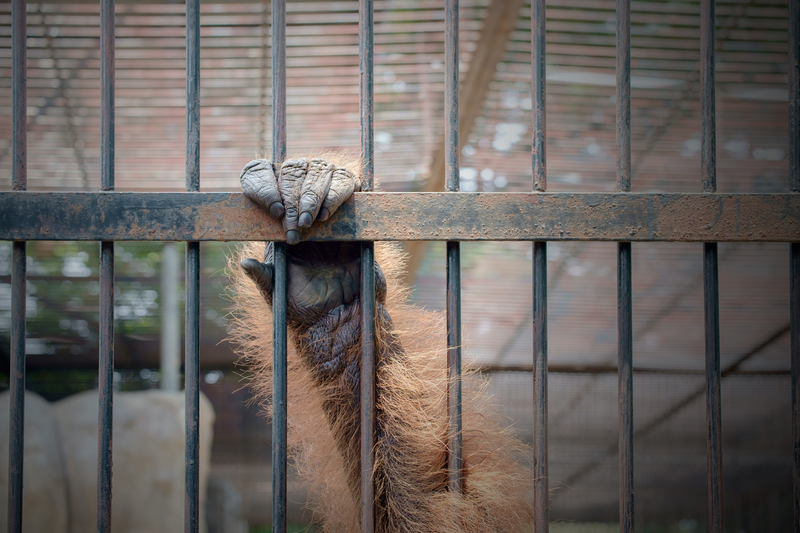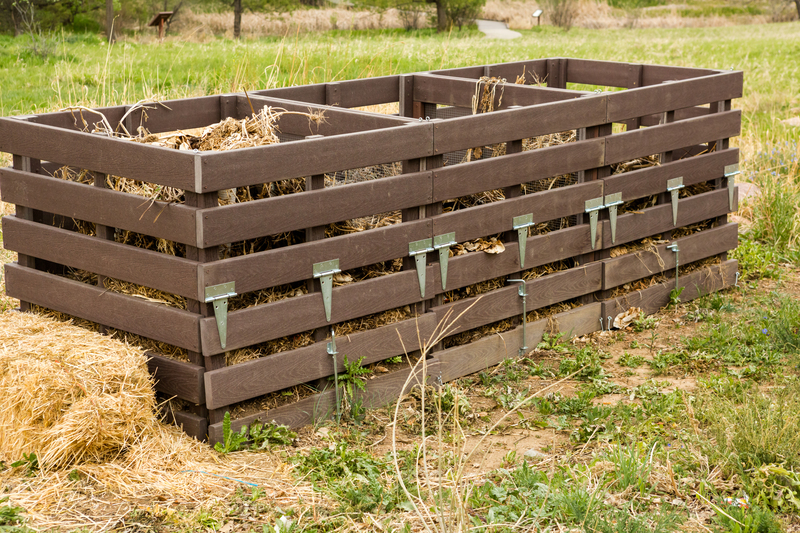Avoid These Plastics for a Safer Environment: The Ultimate Guide
Plastics have revolutionized our lives but their overuse and mismanagement pose severe risks to our environment and health. While some plastics are relatively harmless and recyclable, others contain hazardous chemicals, persist in nature, and are extremely hard to recycle. If you are keen on protecting the environment and securing a healthy future, it's crucial to understand which plastics to avoid and why.
Why Avoid Certain Plastics?
Plastic pollution is one of the gravest environmental threats facing our planet today. Millions of tons of discarded plastics end up in landfills, rivers, and oceans yearly, where they leach toxins, endanger wildlife, and degrade into microplastics that permeate ecosystems and, eventually, our own bodies. By steering clear of the most problematic plastics, we take an important step toward a safer, greener world.
- Some plastics are toxic. Their chemical makeup can disrupt hormones, damage organs, and even cause cancer.
- Others are non-recyclable. They clog waste management systems and remain in the environment for centuries.
- Plastic manufacturing is resource-intensive. It drains fossil fuels and emits greenhouse gases, accelerating climate change.

Types of Plastics You Should Avoid for a Safer Environment
Not all plastics are created equal. Let's explore the most environmentally harmful plastics, their risks, and sustainable alternatives you can embrace right now.
1. Polyvinyl Chloride (PVC, Recycling Code 3)
PVC is used in pipes, vinyl flooring, shower curtains, and some food packaging. It's durable but notorious for its dangerous chemical constituents, including phthalates and chlorine-based compounds.
- Environmental Impact: Producing and disposing of PVC releases carcinogenic dioxins and persistent pollutants.
- Health Hazards: Associated with hormone disruption, respiratory problems, and increased cancer risk.
- Difficult to Recycle: Less than 1% of PVC gets recycled due to its toxic additives and complex structure.
Better Alternatives: Opt for glass, stainless steel, or polyethylene (codes 1 and 2) for storage and construction.
2. Polystyrene (PS, Recycling Code 6)
Commonly found as Styrofoam in disposable cups, food containers, and packaging peanuts, polystyrene is lightweight and cheap. But it's among the worst plastics for the environment.
- Non-Biodegradable: Takes hundreds of years to break down and easily fragments into microplastics.
- Toxic By Nature: Contains styrene, a possible human carcinogen that leaches out when heated.
- Wildlife Hazard: Marine animals mistake foam fragments for food, leading to deadly blockages and starvation.
Better Alternatives: Replace single-use foam containers with compostable options or reusable mealboxes.
3. Polycarbonate and "Other" Plastics (Recycling Code 7)
The recycling code 7 "Other" includes polycarbonate and a mix of various plastics. Polycarbonate plastics were once popular for water bottles and baby bottles but often contain BPA (bisphenol-A).
- Health Impact: BPA exposure is linked with endocrine disorders, obesity, diabetes, and impaired brain development in children.
- Susceptibility to Leaching: Chemicals migrate to food and drink, especially when heated.
- Poor Recycling Options: 'Other' plastics are rarely recycled due to their mixed composition and lack of processing infrastructure.
Better Alternatives: Choose glass, stainless steel, or BPA-free plastics labeled codes 1, 2, 4, or 5.
4. Polyethylene Terephthalate (PET, Recycling Code 1) -- With a Caveat
PET is the go-to material for disposable water bottles and food jars. While PET plastics are recyclable, their single-use nature is a significant concern.
- Single-Use Dilemma: Most PET containers are used just once, leading to overflowing landfills and a high carbon footprint.
- Potential for Leaching: PET can leach antimony and other chemicals when exposed to heat and sunlight.
- Energy Intensive Recycling: Although technically recyclable, only a small fraction is actually processed, often resulting in downcycling rather than true recycling.
Better Alternatives: Use refillable water bottles made of glass, steel, or durable plastics and support refill stations where available.
5. Black Plastics
Black colored plastics--often used in food trays and electronic goods--are challenging for recycling centers to process. Machines cannot detect the black color during sorting, so these plastics usually end up in landfills or incinerators.
- Recycling Challenge: Black pigment absorbs sorting machine laser, causing misrouting and contamination of recycling streams.
- Pervasive in Packaging: Common in ready meals, takeout trays, and personal electronics casings.
- Toxin Release: Incineration produces hazardous fumes and ash.
Better Alternatives: Choose clear or natural colored containers and advocate for colorless packaging solutions.
6. Plastic Bags and Film
Thin plastic bags and films, seen in grocery stores and food packaging, present outsized risks far beyond their appearance and use.
- Major Marine Pollutant: Bags are among the top items found in ocean and beach cleanups, where they choke marine wildlife.
- Extraordinarily Hard to Recycle: Lightness leads to them blowing away, clogging recycling machinery, and contaminating compost facilities.
- Petroleum-Based and Persistent: Take centuries to degrade in natural environments.
Better Alternatives: Switch to cloth or mesh bags for shopping, and support paper or compostable wraps over plastic film.
7. Acrylic (Polymethyl Methacrylate, PMMA)
Acrylic, found in displays, signs, and sometimes furniture, is less notorious than others but has recycling and disposal challenges of its own.
- Long-lasting Waste: Acrylic does not decompose easily and is rarely accepted in curbside recycling programs.
- Microplastic Generation: Breaks down into microplastic fragments, especially in outdoor applications.
- Production Impact: The manufacturing process involves toxic substances, contributing to water and air pollution.
Better Alternatives: Choose glass or sustainable composite materials wherever possible.
The Hidden Dangers: Chemical Additives in Plastics
It's not just the main plastic resin that's harmful--plastic additives like flame retardants, plasticizers, and stabilizers may leach into our food, water, and environments. Many of these additives cause long-term health problems and bioaccumulate in animals.
- Phthalates and BPA: Interfere with human hormones (endocrine disruptors).
- Heavy Metals: Added as stabilizers in pipes and containers, leading to contamination risks.
- Flame Retardants: Found in electronics and furniture, persist in dust and can migrate into food.
By avoiding products containing these chemicals, we protect ourselves and our natural world from unnecessary risks.
How to Identify and Avoid Problematic Plastics
Understanding resin identification codes is your first defense against hazardous plastics. Check for the recycling code--usually a number inside a triangle. Here's a quick guide:
- Code 1 (PET): Use sparingly, avoid reheating, recycle if possible.
- Code 2 (HDPE): Generally safer, more widely recycled.
- Code 3 (PVC): Avoid whenever possible.
- Code 4 (LDPE): Used in some bags and wraps; difficult to recycle.
- Code 5 (PP): Safer for food contact, moderately recyclable.
- Code 6 (PS): Avoid (Styrofoam).
- Code 7 (Other/Polycarbonate): Typically avoid, especially if not labeled BPA-free.
Be cautious with plastics that lack a recycling code. Unknown or mixed materials are less likely to be recycled and may contain hidden additives.
Eco-Friendly Choices: What to Use Instead
For a safer environment, adopt these sustainable habits and alternatives:
- Reusable Containers: Invest in glass, stainless steel, or certified BPA-free reusable bottles and lunch boxes.
- Compostable Tableware: Choose items made from bagasse, bamboo, or certified compostable bioplastics with a clear end-of-life path.
- Natural Fiber Bags: Ditch plastic shopping bags in favor of cotton, jute, or hemp.
- Buy in Bulk: Minimize packaging by buying larger quantities and using your own containers where stores allow.
- Avoid Excess Packaging: Select products with minimal or recyclable paper-based packaging.
How to Advocate for Less Plastic in Your Community
If you're committed to avoiding harmful plastics for environmental protection, your choices matter--but community action multiplies the impact. Here's what you can do:
- Encourage local businesses to switch to recyclable or compostable packaging.
- Participate in and support plastic bag bans and other urban waste reduction initiatives.
- Promote local refill stations and package-free shops for groceries and personal care products.
- Share information and educate peers on the dangers of single-use and toxic plastics.

Frequently Asked Questions About Avoiding Problematic Plastics
Q1: Is it possible to avoid all plastics?
Completely eliminating plastic is difficult, but you can drastically reduce exposure by making conscious daily choices. Avoiding single-use plastics and selecting safer material alternatives is a significant step.
Q2: How can I safely dispose of hazardous plastics?
Check local recycling rules, as some centers accept hard plastics and electronics for specialized processing. Never burn plastics in open air--this releases harmful fumes. For items like PVC and electronics, use certified waste collection points.
Q3: Do "biodegradable" or "compostable" plastics solve the problem?
These alternatives may help, but only when managed correctly. Many require industrial composting facilities and can contaminate regular recycling streams. Look for certifications like "industrially compostable" and dispose accordingly.
Q4: How do microplastics affect health and the environment?
Microplastics come from large plastic degradation and personal care products. They are found in soil, water, and air, accumulating up the food chain and potentially disrupting ecosystems and human health.
Conclusion: Take Action for a Safer Environment by Avoiding Harmful Plastics
Plastics are everywhere, but not all are created equal. Polyvinyl chloride, polystyrene, polycarbonate, black plastics, and film plastics are major environmental threats. By avoiding these plastics and making responsible, informed choices, you help create a healthier planet for all life.
Your choices matter. Choose safer alternatives, educate others, and support systemic changes to minimize plastic pollution for a safer environment. Together, we can make a lasting difference--one plastic-free choice at a time.